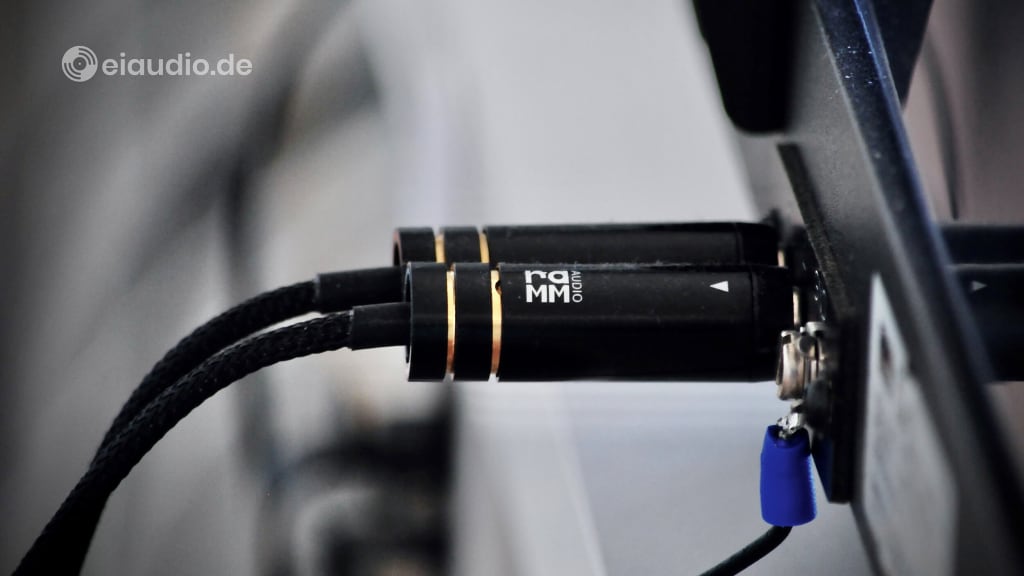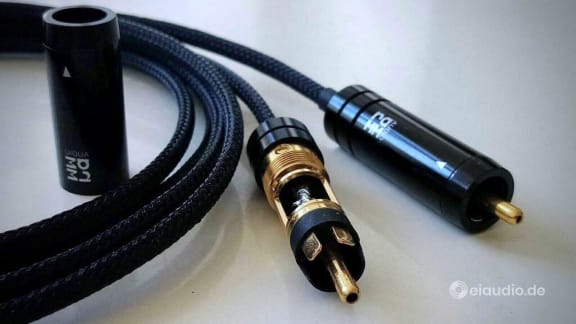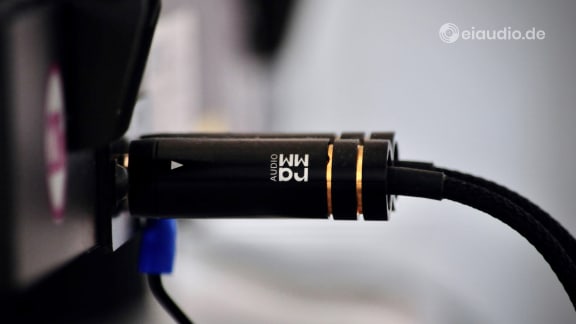HBS1 - Silver Solid Core
Published: 28/02/2021
Manufacturing date: 2024
Author: Karsten Hein
Category: Gear & Review
Tag(s): Cables
When I was younger and still drinking beer, I was attracted to Pils rather than export or wheat beer, because I was fascinated with the concept of having to wait seven minutes for it, while its foam was settling in the glass. Seven minutes seemed a long time to a young man‘s heart, and the reward was a smooth refreshing drink that appeared to entail a certain maturity, which it also bestowed on the juvenile drinker.
As I grew older, I started to prefer wine over beer. And, in terms of wine, I had a preference for mature reds with a dark and fruity nose. Irish and Scotch whiskys as well have at times captured my imagination. One such highlight in whisky was the discovery of an old Haig whisky from the 1950s that still tasted smooth and fulfilling after over sixty years. Amazing!
It is no secret that some things get better as they get older, while others fade away quickly. And the difference between the two will not reveal itself to the hasty consumer. Long-term quality is more than a coincidence. It is much rather a secret bond between mature customers on the one side and experienced craftsmanship on the other. In other words, a sacred pact between the steady hand and the steady mind that will not be side-tracked by trifles.
Where quality does prevail, both customer and vendor follow the basic idea that perfection has its price. Sadly, the relationship between quality and price is all too often inverted, and customers are sad to find that their expensive products break soon after purchase. We can therefore safely concur that paying a high price does not necessarily entail quality. Customers looking for a safe purchase are therefore best advised to trust in a well-established relationship or purchase from a well-known brand.
Advert eiaudio/shop:
The trouble with well-known brands in recent years has been that they, too, are driven by shareholders with minimal interest in the company’s products. All their focus, so it seems, is on the short-term and mostly in themselves. This creates a scenario in which established brands with a name to lose are forced to save on materials and labour and to sell their products at the highest possible price. Increasingly, therefore, paying a higher price does not entail sufficient quality anymore. It will be interesting to see which brands can manage to survive, once the relationship of trust with their customers has been broken.
Ultimately, this leads to the question of who to trust when exploring unfamiliar territory. Solid Core Silver cables are an exotic breed, usually reserved for High End audio enthusiasts with lots of money to spend. Buying such cables from an established manufacturer can easily set you back a few hundred euros, although the basic materials are not actually that expensive. If they were, people would not be able to afford silver cutlery, etc. Manufacturers of silver cables might be rare, and this might drive up prices, perhaps, but even bulk cables can be found at relatively affordable prices. Sadly though, terminated solid core cables are mostly expensive due to brand image, patents, and a whole lot of marketing.
From the beginning of this exploration, it was therefore clear to me that I would not be able to afford any brand interconnect of this type. Even used, these cables were out of my reach. And since I did not have a well-established relationship with a specialist yet, I had to find a source willing to partner with me at the monetary level that I was at in that moment. Among the many used cables on offer, I spotted a vendor by the name of Holger Becker, a man who has found a liking to simple but effective silver interconnects and enjoys building them for himself and others.
The HBS1 is Holger Becker’s number one silver cable. It bears the initials of his name, followed by the letter for silver and the figure one for his highest quality product. Holger especially intended the interconnect to work well with critical turntable cartridges. Measured with the plugs in place, the product features a total resistance of just 56pF. The cable consists of a silver solid core conductor that is shielded by a copper mesh. It is terminated with gold-plated pure copper RCA/cinch plugs made by RAMM Audio that screw firmly into place. The cable is relatively thin and surprisingly flexible, has no rigidity of its own and needs to be suspended freely behind the rack.
Silver is a completely different beast from copper, of course. And although I have experience in running in cables, and have read that silver solid-core conductors have a run-in time of approximately 2 months, I must say that the first three weeks made me doubt that this interconnect was ever going to sound good, not even to speak of great. When the cable arrived, I did not recognise anything in its performance that reminded me of the cherished joys of listening.
The HBS1 produced mostly mids with disappointing and overly tight bass. The music clung to the speakers, and there were hardly any transients to speak of. Individual notes appeared to be cut short, leaving sad blotches of emptiness in the soundstage. If it had been real musicians playing and not the speakers, they would have packed up and left our listening room, appalled at what was coming out of their instruments. And I must confess, it is only due to my experience with our Belden 9497 speaker cables that I had an ounce of hope left that allowed me to endure. To help me through it, I marked the dates in my calendar: ‘HBS1 one month old’ and ‘HBS1 two month old (Review?)’.
I decided that I would give this cable time to fully mature, just like a good wine or whisky, before attempting to write a review on it. And, thankfully, I had meanwhile become seasoned enough myself, not to jump to hasty conclusions. Mr. Becker himself was hesitant when I asked him about sound quality and run-in time and suggested that this was a personal matter he would rather not comment on. I must confess that I was a little disappointed, because I could have used some reassurance in my time of expectation.
From week to week there was less that troubled me about the cable. I hooked it up in various positions that would allow more current to flow than our turntable is capable of producing and found that it sounded great on all sources. For some reason, however, I could not get it to perform well between preamp and power amp. Perhaps it had to do with the need for higher resistance on one of the devices? This aside, I am now 6 weeks into my exploration and can safely say that this interconnect is doing a fabulous job on our Sansui SR-525 turntable. I have never heard such an effortless growling bass coming from a turntable while enjoying stellar transients in the treble and a wonderfully warm midrange.
In fact, my brother came over just the other day, and we ended up having an extended listening session together. My original intention had been to show him a Rega Planet CD player that I had recently bought from an audio enthusiast in Remscheid, near Wuppertal, but instead we kept retuning to the Sansui SR-525 turntable with the HBS1 interconnect, marvelling at how positively engaging, expressive, and powerful it sounded. Manu Katché’s “Neighbourhood” had all the drive and energy one could ask for. The vintage Shure M75-6S is a highly musical cartridge with high output and excellent bass slam that wants to entertain, paired with the HBS1, these positive characteristics are a real joy.
Silver cables take their time to mature, because the base material is very hard and fractures easily. Such micro fractures take a long time to heal. Moving the cable around will cause new fractures resulting in renewed run-in times. Silver cables only make sense in applications where they are left to rest in position over longer periods of time. Similar to a good wine and whiskey, they do not appeal to the entry-level consumer. As a result of their excellent conductivity, they have the potential to reveal nasty flaws in a HiFi system that go unnoticed with regular copper conductors. But for mature listeners who understand about setting up flawless systems, this type of cable will help to bring improved agility and realism to the system. Effortless, expansive, subtle, and merciless are only some of the adjectives that come to mind.
Note: I could not help but wonder about the material transitions from the silver solid-core cable construction to the pure copper gold-plated plugs. RAMM audio also makes silver-plated plugs, but on his HBS2 interconnects Holger Becker uses lower-priced silver-plated WM-Audio plugs instead that have a brass core, a decision that again introduces a third material into the equation. I shall have to give the HBS2 a listen to find out, if the choice of materials makes a discernible difference in this case.
Specifications
- Cable lengths: 100cm
- DC loop resistance: 0.48 Ohm/m
- Parallel capacity: 58 Pikofarad/m
- Handling: non directional, flexible
- Termination: RAMM audio, pure copper, gold plated
- Position tested: Turntable, Shure M75-6S (original stylus)





